- This normal phenomenon with severe jaw injury. Extraction also affects other neighboring crowns, so moderate toothache in the area of the extracted and adjacent tooth will persist for several more days, and if so, even longer. Severe toothache, when the entire jaw ache, is a very common occurrence if a complex operation has been performed. After visiting the dentist, there will be swelling, mild inflammation, swelling and redness.
The injured gum and neighboring organs will be noticeable, but within three days the severe toothache in the area of the removed organ will disappear if the hole is properly cared for. You can relieve pain after extraction yourself at home by rinsing the mouth and taking medicine.
Swelling after extraction can interfere with normal mouth opening and chewing, which often results in headaches, aching jaws, and inflamed gums.
Causes of complications after treatment
Before you relieve pain after tooth extraction, you need to understand what its causes are. After wisdom teeth are removed, the gums and adjacent molars become very sensitive. The immune system begins to work more actively and do everything possible to fast healing sockets and bone tissue formation. Normally, the first 3-6 days after wisdom tooth removal there is slight swelling, moderate toothache, and redness. When this does not go away within a week, there is a feeling of pulsation, the gums, cheek and almost the entire jaw hurt, this indicates pathological changes.
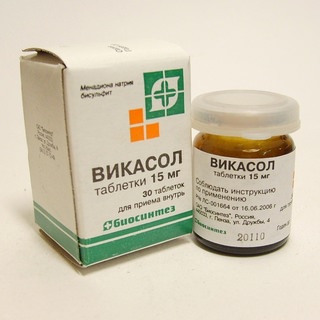
Dangerous causes of pain after wisdom teeth are pulled out:
- Alveolitis or infectious process in the hole, which develops due to the loss of a blood clot. This clot is necessary for normal healing after a tooth has been pulled out. It may not appear at all or may fall out after rinsing your mouth or chewing hard foods. When the hole remains open, an infection gets there, causing the gums to become inflamed and swollen. This can be prevented if you do not rinse and chew on the healthy side at first;
- Poor quality of wisdom - the human factor plays a role here; the dentist’s inattention can lead to the fact that the root is not completely removed or goes unnoticed inflammatory processes. This can be avoided if you choose a specialist and clinic responsibly;
- Inflammation facial nerve what happens when a wisdom tooth is removed lower jaw. During extraction, the doctor may damage the nerve while trying to pull out the root. With this complication, unbearable pain occurs, but the gums do not suffer, so there is no swelling. This complication can be noticed by shooting pain that occurs suddenly. In this case, the entire jaw can hurt, radiating to the neck and eyes.
You can do something on your own after a wisdom tooth has been pulled out and the pain does not go away, only if unpleasant symptoms not caused by the listed reasons.
Relieve pain and swelling after extraction
You can start treatment with the following set of symptoms:
- the jaw hurts and the mouth does not open completely;
- the gums near the removed organ are red and pulsating;
- severe headache;
- swelling of the cheek occurs;
- gums bleed;
- there is general weakness and high temperature.
You need to look into the hole of the removed root and check if there is a blood clot there. If it is missing, you need to consult a doctor to avoid infection. The dentist will prescribe medications to speed up bone regenerative processes and tell you what you can do at home to relieve swelling and pain.

Normally, on the second day after the figure eight has been removed, the gums turn pale or acquire a yellow tint. This is fibrin plaque, which should not scare you. After a week, the blood clot begins to epithelialize and the symptoms subside.
What can be done after a wisdom tooth has been pulled out?
- Take the drug Ketanov, the medicine quickly relieves pain, after 15 minutes the headache and jaw stop hurting. The drug should not be given to children or taken during pregnancy;
- Lubricate the gums with anti-inflammatory gel - this will remove swelling and relieve pain;
- When the pain is very severe, the main thing is not to disturb the wound, not to put pressure on the gums and not to check with your tongue whether there is a blood clot;
- Do not drink or eat anything hot, breathe through your nose and completely give up sweets for a while;
- Avoid drinking alcohol for the entire period of healing of the hole; it is also advisable not to smoke;
- Apply cold compresses to the cheek, but under no circumstances apply heat to the sore area.
If the removed figure eight was the cause of inflammation of the gums, it is necessary to carry out treatment of the mucous membrane, which works out very well local means and even folk recipes.

You can remove the causes of pain by the following means:
- the drug Maraslavin, Polyminerol, Parodontocide;
- in case of severe inflammation, the doctor prescribes antibiotics; in other cases they are prohibited;
- a decoction of chamomile, St. John's wort, sage and oak bark is the most optimal, which will give you a headache.
When you have a headache, it is important to calm down, sometimes this is enough to relieve the symptom. The figure eight is a complex organ, and even after you managed to get rid of it, your head will hurt and your cheek will swell. But it’s better to wait a week than to suffer from chronic pain caused by neuritis or osteomyelitis, if the figure eight is not removed.
Severe pain after tooth extraction? This issue is especially often faced by patients who remove molar bone formations and wisdom teeth.
Because of surgical intervention by the attending physician in the oral cavity occurs open wound, which leads to severe pain.
Coping with whining and nagging pain alone is not possible for many patients. Therefore, dentists prescribe painkillers after tooth extraction. Let's look at the best ones.
Painkillers

The process of tooth extraction leads to pain in the part of the mouth where surgery was performed. This pain should go away within 3-7 hours after surgery.
Toothache can last for several days, accompanied by increased (low) temperature, cutting sensations in the area extracted tooth, tumors. This condition most often occurs as a result. A specialist examination is required.
To prevent postoperative pain from developing into inflammatory disease oral cavity, the attending physician prescribes some medications that speed up the healing process.
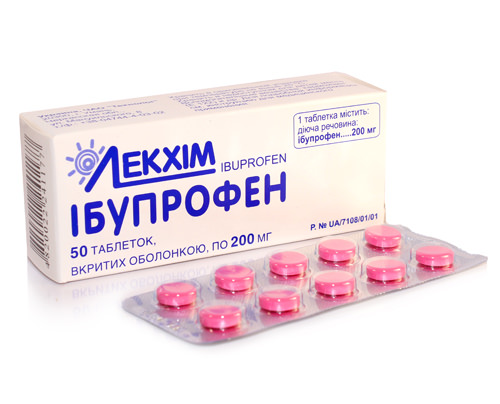
Also, medications purchased without a prescription at pharmacies are especially popular.
Painkillers medications are divided into three main groups:
- Opioid;
- Non-opioid;
- Combined;
The most popular medications are drugs from the opioid group.
They have the following distinctive properties:
- Are not drugs, both non-opioid and combination drugs.
- They don't develop dependencies.
- They do not form an addiction.
- Available without a prescription.
- Available for sale in any pharmacy in the city.
- Least quantity side effects, compared to opioids and combined means.
- The most effective.
Medicines, not included in the above groups, are symptomatic.
Examples of painkillers:
- Ibuprofen;
- Paracetamol;
- Sedalgin;
- Ketonal;
- Analgin;
Hemostatic drugs

Surgical procedures affect the underlying health of the oral cavity. Due to the active action (the removal itself bone formation) blood clots appear in the alveoli.
They are formed due to bleeding due to the dental artery, a network of arteries and capillaries in the gums.
Attention! Bleeding stops after 20 - 30 minutes with proper exposure.
You can speed up the cessation of bleeding by placing a gauze pad and then applying pressure.
Important! Rinsing the mouth after pulling out a tooth formation is not the right way accelerating bleeding control. This procedure slows down the healing of the top layer of gums.
Preparations:
- Vikasol;
- Vitamin P;
- Aminocaproic acid;
- Medical gelatin;
- Trasylol;
- Hemophobin;
- Dicynone;
The first remedy that the attending physician offers the patient is hydrogen peroxide. After pulling out the bone formation, apply a cotton pad soaked in this medicine. It helps form a clot to stop bleeding in the tooth socket.
This method stopping bleeding does not always have the desired result, so it is worth contacting your doctor for advice in this situation.
The highest quality and effective medicine to stop bleeding (treatment is carried out only in the most difficult cases, for example, if the bleeding does not stop within two to three hours) is adrenaline. It is applied to the wound using a tampon.
Anti-inflammatory drugs
Anti-inflammatory drugs only provide temporary relief painful sensations. For an exact prescription, you must consult your doctor.
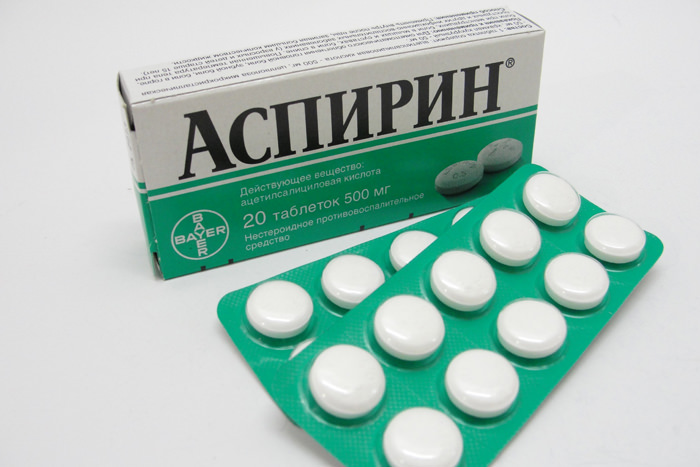
Anti-inflammatory drugs are most often used for alveolitis.
The main signs of alveolitis:
- Blood clot decline.
- Weakened gums.
- Fever.
- Severe inflammatory manifestations on the face.
The wound (socket) festers.
If such signs of the disease are detected, you should consult a doctor.
Anti-inflammatory drugs:
- Aspirin;
- Diflunisal;
- Clofezone;
- Sulindak;
- Etodolac;
- Piroxicam;
- Ibuprofen;
- Naproxen;
- Ketoprofen;
- Tiaprofenic acid;
- Fenoprofen;
- Celecoxib;
Decongestants
After surgery to extract a tooth, swelling of any part of the face occurs. Most often, the site of active swelling is the cheek closest to the wound.
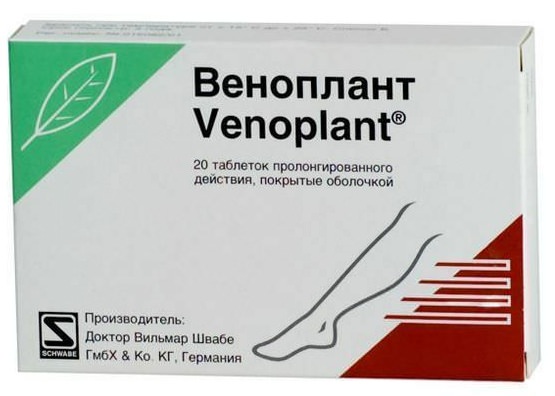
Causes of edema:
- Inflammation of the oral cavity occurs. For precise definition The causes of swelling should be consulted with a specialist. At the dental clinic, the doctor will prescribe special treatment, decongestants.
- During tooth extraction, gum injury occurs, which causes inflammatory processes.
- Difficult removal of a tooth formation and its root. In practice, many dental specialists have experienced complex extraction of a bone formation (the mucous membrane is opened, after which the tooth is removed from the socket). This process results in inflammation and swelling as the oral tissues are remodeled and damaged.
Swelling causes a lot of discomfort and even pain, then people resort to decongestants, which can be bought at any pharmacy.
Decongestants:
- Venoplant;
- Indovazin;
- Venosan;
- Venen;
- Visine;
- Rhinopront;
- Tizin;
- Afalase;
If the swelling does not go away after using decongestants, you should consult a specialist.
Antibiotics

They help speed up the healing process of the hole, relieve inflammation, and minimize all pain.
Antibiotics are produced in the form of:
- tablets;
- solutions (mouth rinse);
- drops;
- injections;
- ointments;
Important! Antibiotic treatment after tooth extraction can only be prescribed by a specialist doctor.
The use of antibiotics occurs only in the most severe cases. For example, an operation to remove a tooth was difficult; in the process, damage to bone tissue and periodontal tissue was formed. In this situation, the attending physician has the right to prescribe antibiotics.
The dentist informs the patient before taking antibiotics.
But these medications are increasingly being replaced by an injection of a highly concentrated antibiotic, which completely replaces the course of antibiotic treatment after tooth extraction.
The disadvantages of using antibiotics are:
- nausea;
- vomit;
- diarrhea;
- stomach upset;
- inflammation of the oral cavity;
- liver dysfunction;
- disruption of the immune system;
To avoid the above series side effects, you need to consult a doctor who will dosage correctly and indicate the time of administration.
Important! But-shpa is not effective means for pain after tooth extraction, since this remedy is intended for spasms in the body.
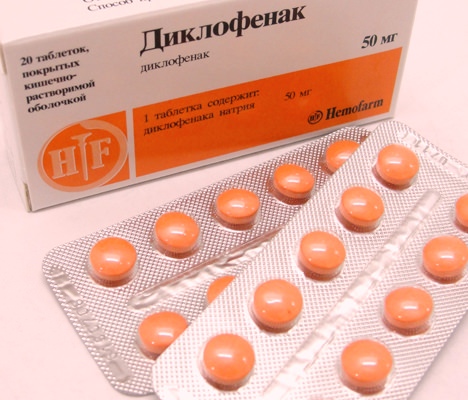
List of antibiotics:
- Flemoxin;
- Tsifran;
- Amoxicillin;
- Nurofen;
- Diclofenac;
- Nise;
- Ketanov;
- Rotokan;
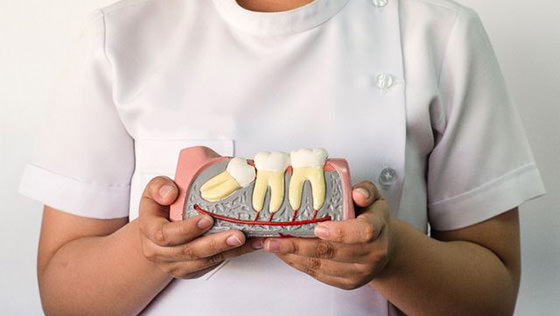
After the procedure, the attending physician prescribes treatment and sends the patient home:
- The first thing you should not do upon arrival home is eat within 3 hours. May cause ligament damage.
- You should not do heavy exercises or overload yourself physically.
- Also, it is not correct to take hot baths and steam after tooth extraction.
- It is necessary to follow the regimen (if the operation was difficult), take prescribed medications daily.
- No need to rinse oral cavity within 3-4 days after tooth extraction, as hemostasis may be disrupted, which can lead to bleeding from the socket.
If you carefully monitor oral hygiene, the pain will go away in as soon as possible and you won’t have to urgently decide how to relieve pain immediately after tooth extraction.
Modern dentists try to save their patients’ teeth, but sometimes emergency cases when the doctor is forced to perform an extraction procedure - tooth removal surgically.
Tooth extraction is a minor operation, but still significantly injures the surface of the gums, bone tissue, oral mucosa.
Indications for removal
Tooth extraction is recommended in cases of extensive caries, periodontal disease, or when tooth decay is so critical that restoration is impossible. In most cases, extraction occurs quickly while maintaining the integrity of the tooth. But sometimes the tooth has to be removed in separate pieces.
Types of deletion
- Simple - the tooth is removed entirely, painful sensations are minimal and last about a day;
- Complex - done with dissection of the mucous membrane, drilling of the jaw and removal of the tooth in pieces. Pain at the extraction site is felt until the initial stage of wound healing (about 7 days).
Relieving pain after tooth extraction
Still in the dentist's office at the extraction site in mandatory ice is applied. As a result of the removal process without complications, a cold compress will be quite enough to relieve the condition after removal. You should definitely ask your doctor how best to get rid of pain after tooth extraction. In cases of amplification pain symptoms, the doctor may prescribe analgesic or anti-inflammatory medications.
Mainly recommended for use are Ketanov, Nimesil, and sometimes Diclofenac. Medicines should be used only as prescribed by a doctor, taking into account all the nuances in the process surgical intervention And general condition patient. People who suffer from toothache often wonder how to relieve pain after tooth extraction most effectively.
Effective tips how to relieve pain after extraction:
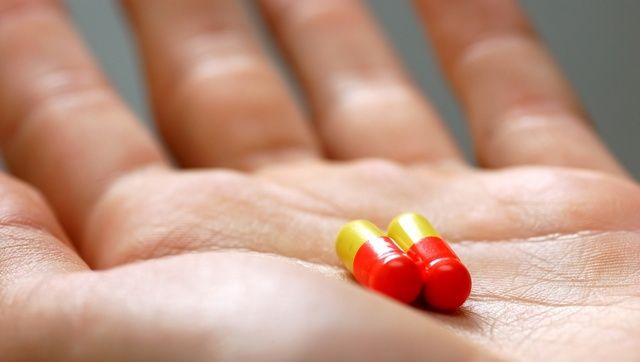
Reduced pain levels
For less manifestation pain syndrome after surgery you should take the drug from  groups of painkillers. If you experience intense pain, you should use an analgesic, but you should not decide how to relieve severe pain after tooth extraction on your own, but only with the permission of your doctor.
groups of painkillers. If you experience intense pain, you should use an analgesic, but you should not decide how to relieve severe pain after tooth extraction on your own, but only with the permission of your doctor.
The use of antihistamines helps reduce swelling and helps enhance the effect of pain relief. After taking this group of medications, the patient will be able to calm down nervous system and fall asleep.
To restore local damage, it is allowed to use baths at room temperature from decoctions of chamomile, oak bark, and sage. The procedure is carried out by taking the infusion into the mouth, holding it for a while on the injured side and spitting it out without rinsing.
The most common method is to apply cold to the cheek, always through thick gauze. The manipulation is repeated if the pain returns.
If inflammatory processes begin, the doctor cleans the hole from purulent contents and prescribes a course of antibiotics.
Causes of phantom pain
Toothache is closely related to the cause of injury to the soft tissues penetrated nerve bundles. During the surgical operation itself, the patient does not feel anything, since the removal is carried out under the influence of local anesthetic. Pain appears after the anesthesia wears off. In most cases, aching pain is characteristic, interfering with the calm rhythm of life.
There are rarely cases of intense pain manifestations, severe throbbing pain. Causes of this pain:

There is a high probability of damage trigeminal nerve during the operation. The pain has a sharp shooting character, radiating to the neck, gums, adjacent teeth, temples and eyes. External condition The gingival surface is not changed, there is no swelling or redness.
Symptoms indicating complications:
- Appearance severe pain 3 days after getting rid of the problem tooth;
- Increasing pain;
- The pain becomes throbbing;
- The appearance of swelling of the gums, swelling of the cheeks, strong odor from the mouth, sharp increase temperature;
- Pain when touching the postoperative wound several days after the operation.
Immediately after the procedure, it is necessary to accurately follow any instructions from the dentist; he will tell you how to properly relieve severe toothache immediately after extraction. If there is the slightest manifestation of symptoms of a complication, you must urgently go for an examination to a dentist.
When pathological processes Do not indulge in self-medication; any damage to the blood clot can lead to infection. You cannot change or put a tampon into the wound yourself; household materials can accumulate harmful microorganisms.
Tooth extraction is surgery which is performed under anesthesia. Most often, after it is carried out, most patients experience acute or It's a dull pain. During tooth extraction surgery, the tissues of the jaw and gums are injured. It is for this reason that in most cases pain and swelling occur. Relieving pain after tooth extraction is sometimes quite difficult. Dentists recommend applying cold or drinking an analgesic. If the pain does not leave you alone for several days, then you should immediately make an appointment with a specialist who will identify the cause of its occurrence and save you from painful suffering.
Usually after the end of tooth extraction, 2-3 hours later, when the effect of local anesthesia wears off, the patient begins to feel sharp pain at the location of this operation. If, however, your doctor has prescribed you to use cold compresses to relieve pain after tooth extraction, be careful. Hypothermia of tissues must not be allowed, as the consequences can be disastrous. A container filled cold water or ice, it is necessary to keep it for no more than 10 minutes at the removal site; after 20-30 minutes, a cold compress can be applied again. Prolonged cooling negatively affects the healing process of scars and wounds. Elevated temperatures also have a huge impact on the appearance of pain, so you should avoid visiting the sauna and the beach for a day. Even taking a hot bath after tooth extraction can harm the healing process. The pain will go away much faster if you refrain from smoking and eating hot food.
Your dentist may also recommend rinsing. It will help relieve pain after tooth extraction, which occurs when an infection gets into the wound hole. In order to relieve inflammation, it is recommended to rinse your mouth for 15-20 minutes. To prepare the solution you will need boiled water and a spoonful of table soda; soda can be replaced with table salt or a solution of potassium permanganate. If the whole process goes without complications, then complete healing will occur in 2 weeks.
To relieve swelling, just take antihistamine, which is specialized in eliminating allergic reaction for anesthesia.
The use of analgesics such as Ketanov or Solpadeine will help relieve acute pain after tooth extraction; to enhance the analgesic effect, you should take half a Suprastin tablet at night. Do not self-medicate. Only the dentist and pharmacist know how best to act in such a situation.
Painkillers after tooth extraction are taken on the recommendation of a doctor. A tooth extraction operation is considered a trauma to the mucous membrane and bone. If pain occurs after a tooth has been pulled out, you can take an anesthetic or analgesic.
The symptom in question is considered a normal reaction of the body to injury. If the anesthesia administered during the operation has stopped working, the hole begins to hurt. The intensity of the syndrome depends on the following factors:
- volume and duration of manipulation;
- individual pain threshold;
- an infection in the gum of a problematic tooth.
Usually pain bothers the patient for 3 days after surgery. To eliminate it, you can take painkillers. Its intensity will gradually decrease. The pain will completely disappear after epithylization of the wound. When is the best time to seek help from a doctor?
Urgent assistance from specialists is needed in the following cases:
- pain appears within 72 hours or it increases, accompanied by swelling and redness of the gums and skin;
- on the 3rd day after the manipulation, pain appears in the socket, swelling occurs, bad smell from mouth;
- spread of pain to the entire jaw or several teeth, which does not disappear if painkillers are taken.
Dentists often use lidocaine and anesthetics based on articaine. The last group includes Septonest and Ultracaine.
If the patient is afraid of surgery, the doctor combines anesthetics with a vasoconstrictor drug. With the help of vasoconstrictors, the intensity of bleeding is reduced. Therefore, this scheme is used for complex operations.
The drugs used to relieve pain are selected based on the type of anesthesia administered during the operation. More often administered local anesthesia- medications that block the transmission of pain impulses in the area of their administration. After the injection, pain sensitivity is eliminated, and the tooth is pulled out painlessly.
Is it possible to eliminate toothache by taking non-narcotic analgesics. Doctors advise taking non-narcotic analgesics after tooth extraction, as they affect cyclooxygenase. This enzyme is responsible for the synthesis of a substance involved in the formation of pain in cells. Some analgesics have anti-inflammatory effects.
But such anesthesia can harm the mucous membrane, increasing the tendency to bleeding. Therefore, the dentist must prescribe an analgesic. It is better to take a drug with maximum impact, but minimal incidence of adverse reactions.








